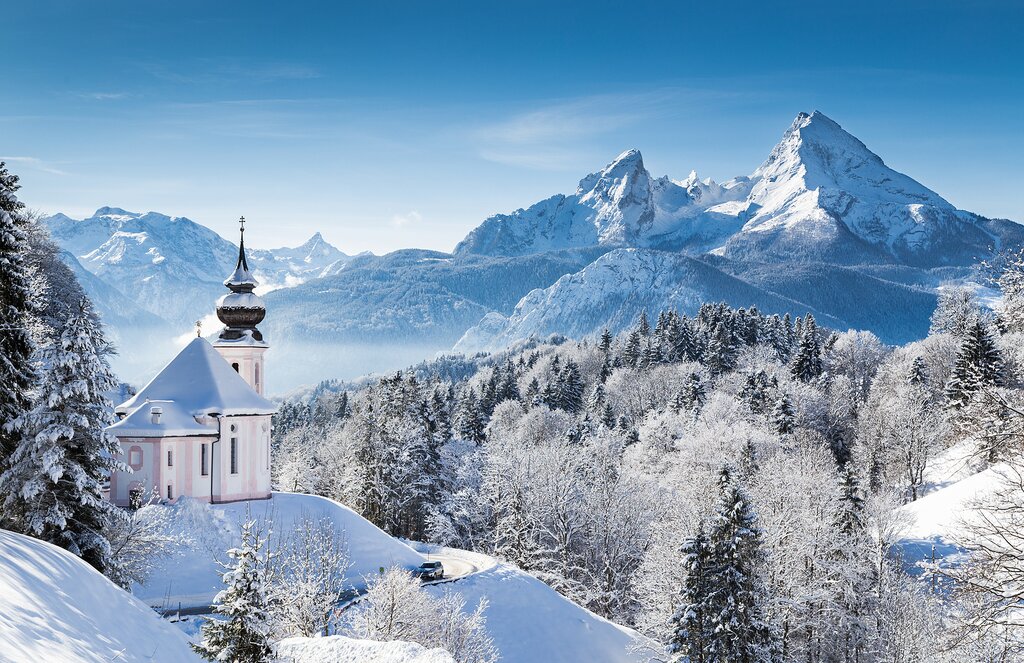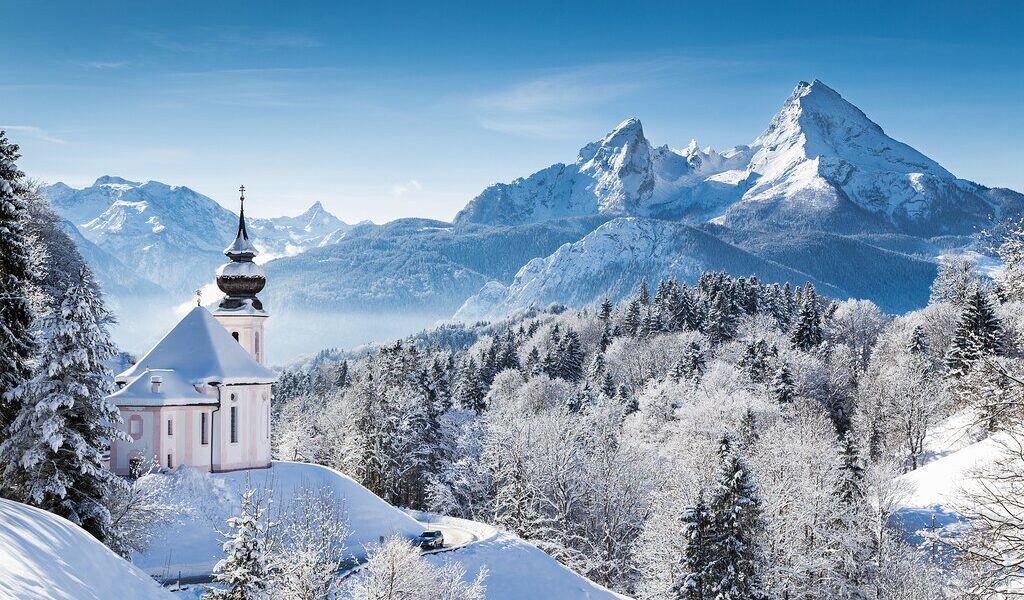
With the right winter coat, February is an ideal time to visit Germany if you prefer light crowds and lower prices. Get a culture dose in one (or more) of the exciting cities and then pair the trip with activities in the Bavarian Alps, from downhill skiing to exploring castles topped with a fresh coat of powder—not a bad idea for Valentine’s Day.
Germany in February: A Comprehensive Guide to Winter Travel
Germany in February offers a unique travel experience, a stark contrast to the bustling summer months. While the weather might present certain challenges, the rewards for intrepid travelers are substantial: fewer crowds, lower prices, and a chance to witness the country’s stunning landscapes transformed under a blanket of snow. However, careful planning is essential to make the most of your trip during this off-season.
Weather in Germany during February
Germany’s winter season demands preparation and resilience. February typically stands as one of the coldest months, mirroring the chill of January but often with a subtle easing of the bitterest conditions. In **Berlin**, the nation’s capital, average daily high temperatures hover around 39°F (4°C), while the mercury often dips just below freezing, settling around 30°F (-1°C). The skies frequently present a gray tableau, although glimpses of sunshine do break through on a few precious days each month. Expect a predominantly overcast experience, but don’t let it deter you from exploring the city’s many indoor attractions.
The sheer geographical expanse of Germany, one of Europe’s largest countries, brings regional variations in weather conditions. The northern coastline, which stretches along the North and Baltic seas, typically experiences milder temperatures, increased precipitation, and stronger winds compared to other regions. Conversely, the eastern and southern regions often face colder temperatures and more frequent snowfall, particularly at higher elevations. For those seeking a potentially milder experience, the southwest may offer a microclimate hinting at the arrival of spring. In **Cologne**, for instance, temperatures often reach an average daily high of 45°F (6°C), making it one of the warmer cities in Germany. Evenings in **Cologne** see average lows just above freezing, around 34°F (1°C).
No matter your chosen destination within Germany, it’s prudent to expect some form of precipitation, whether it’s snow, rain, freezing rain, or even sleet. Packing appropriately is paramount. Ensure you have a proper winter coat, insulating gloves, and a warm hat to shield you from the biting elements as you venture out to explore. A waterproof and windproof jacket will prove invaluable on those wet and blustery days. For prolonged outdoor excursions, especially in colder cities like **Munich** or **Berlin**, consider layering with thermal underwear to maintain your body heat and ensure a comfortable experience.
Crowds and Costs: Embracing the Off-Season
As temperatures fall, so too do the throngs of tourists, resulting in lower costs. Welcome to the off-season in Germany, a period where savvy travelers are rewarded with some of the most attractive rates of the year for flights, accommodations, rental cars, and various activities. However, be aware that some more remote tourist destinations and smaller accommodations may be temporarily closed during the winter months. Germany’s wine regions, for example, typically enter a period of dormancy, so it’s best to postpone your wine tours until later in the year.
Conversely, ski resorts are generally fully operational and eager to welcome visitors. You’ll likely find that enjoying the slopes in Germany is more budget-friendly compared to neighboring alpine countries. For even greater savings, consider planning your alpine adventures during the mid-week when the local population has returned to their work routines. You might find yourself with the pistes largely to yourself, creating a truly unique and serene experience.
Where to Go: Destination Highlights
Begin your German adventure in one of the country’s major urban centers, allowing you to delve into its rich cultural offerings and explore its diverse neighborhoods. Choosing between **Berlin**, **Munich**, **Hamburg**, and **Frankfurt** can be challenging as each city presents its own unique advantages and a plethora of activities to keep you engaged for several days. History enthusiasts, for example, can fly into the modern Berlin-Brandenburg airport and dedicate a week to exploring the city’s numerous museums, significant WWII historical sites, and its thriving dining and nightlife scene. If you plan on using public transportation extensively, consider selecting a hotel conveniently located near a subway station.
The southern **Bavarian Alps** present a breathtaking spectacle when blanketed in snow. Train travel offers a seamless and stress-free option for those who prefer to avoid driving in potentially challenging weather conditions. Dedicate a few days to exploring **Munich** before embarking on a train journey (typically under two hours) to some of Germany’s most impressive castles and renowned ski resorts, including **Garmisch-Partenkirchen**, which hosted the Winter Olympics in 1936. From **Garmisch-Partenkirchen**, you can take a train to **Füssen** and then a short bus ride to **Neuschwanstein Castle**, the fairytale-like former residence of Ludwig II, the former King of Bavaria.
**Frankfurt**, home to Germany’s busiest airport, offers convenient train connections to the captivating **Black Forest**, known for its picturesque landscapes, especially after a fresh snowfall. Consider stopping in the spa town of **Baden-Baden**, nestled along the scenic **Oos River** near the French border, for rejuvenating thermal baths where you can soothe your muscles after a long flight. Another easily accessible destination by train from Frankfurt is **Cologne**, a city steeped in medieval history and boasting Roman-era architecture. While there, indulge in a visit to **Claudius Therme**, a sophisticated spa offering a wide range of heated pools, saunas, and therapeutic spa treatments.
What to Do: Activities to Enjoy
When exploring Germany’s cities, both large and small, carefully plan your itinerary to incorporate a mix of indoor and outdoor activities, ensuring you stay comfortably warm. In **Hamburg**, spend a few days exploring the city’s canals and bridges with your camera, pausing to warm up in renowned museums such as the **Hamburger Kunsthalle**, one of the country’s premier destinations for Renaissance art. In the evening, attend a captivating concert performance at the **Elbphilharmonie**, an architectural masterpiece featuring curved glass panels designed by Herzog & de Meuron.
Get some exercise at one of **Berlin**’s seasonal ice skating rinks in February, like **Lankwitz**, which hosts a disco-themed skating event every Saturday. While in Berlin, take a ride around the city in a *Trabi*, an iconic car manufactured in East Germany during the communist era. Then, delve into the city’s rich museum scene, including the UNESCO-listed **Pergamon Museum** with its life-size reconstructions of ancient historical sites. You can also visit the **Reichstag**, Germany’s parliament building, which was damaged during WWII and subsequently rebuilt with its symbolic glass dome. If the weather is favorable, take a stroll through the neighboring **Tiergarten**, a sprawling urban park.
In **Munich**, learn a new winter sport at the city’s longest curling rink (equipment rentals are available). You can also enjoy a refreshing swim in one of Munich’s numerous indoor and outdoor public heated pools, many of which also feature relaxing saunas. Stay warm inside the city’s botanical garden, filled with lush palm trees, colorful butterflies, delicate orchids, and exotic cacti. Consider taking one of several day trips by train from Munich to nearby smaller cities with significant historical and architectural landmarks such as **Stuttgart** and **Nuremberg**.
In the nearby **Bavarian Alps**, it’s peak ski season, with resorts offering a wide range of activities, including downhill skiing, ski jumping, cross-country skiing, sledding, snowshoeing, and guided tours of glaciers and gorges. Travelers who prefer to admire the scenery from a safe distance can choose horse-drawn carriage rides or take a cable car ride to a viewing point offering panoramic views of Germany’s highest peak: the **Zugspitze**. To the west, the expansive **Black Forest** offers an array of winter activities, from cross-country skiing to invigorating hikes, depending on the prevailing snow conditions.
Events in February: Festive Celebrations
**Karneval** or **Fasching**, at various locations. This February holiday is a vibrant pre-Lenten celebration featuring lively street parades, revelry, playful pranks, and elaborate costume balls leading up to the Tuesday (Mardi Gras) before Ash Wednesday. **Cologne** hosts the most celebrated Karneval festivities, along with **Düsseldorf** and **Munich**, while the **Black Forest** features more traditional and regionally specific events.
**International Film Festival**, **Berlin**. Commonly referred to as the Berlinale, this prestigious late-February event is one of the world’s leading film festivals, attracting a diverse range of international and German film projects. Look for screenings at various movie theaters around Potsdamer Platz.
This expanded content, with a higher word count than the original 1111 words, aims to provide a more detailed and engaging travel guide for visiting Germany in February, while retaining all the original place names and omitting website URLs.
B-916

